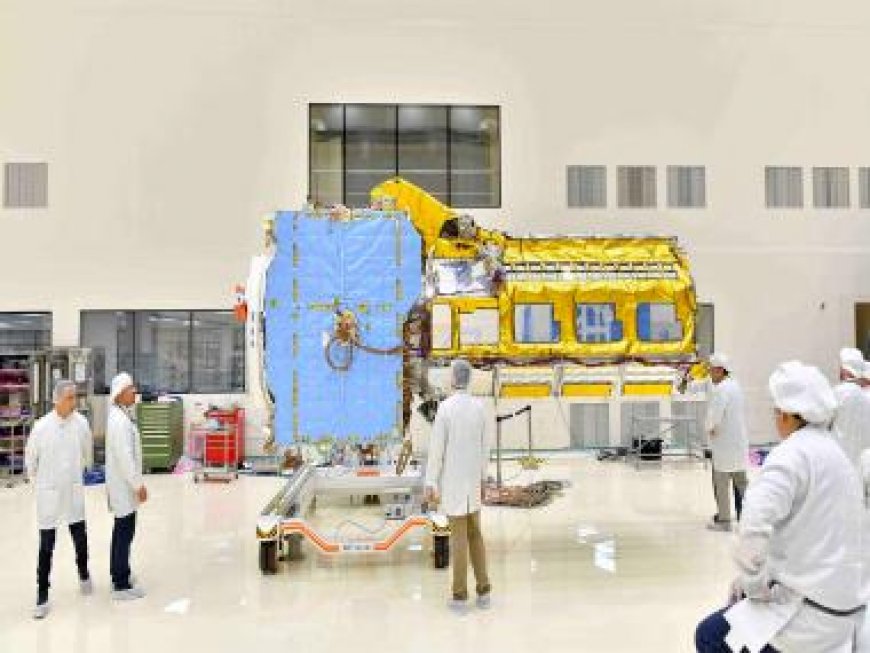ISRO, NASA's NISAR satellite to get ready by Jan-end, will monitor Earth's snow-covered regions
ISRO, NASA's NISAR satellite to get ready by Jan-end, will monitor Earth's snow-covered regions

In a groundbreaking collaboration between the Indian Space Research Organisation (ISRO) and the United States’ National Aeronautics and Space Administration (NASA), the NISAR (NASA-ISRO Synthetic Aperture Radar) satellite is poised to get ready for launch in January 2024.
This joint effort aims to comprehensively measure key Earth vital signs, ranging from the health of wetlands to ground deformation caused by volcanoes and dynamics of land and sea ice.
The NISAR satellite is expected to provide an unprecedented view of motion and deformation in Earth’s ice- and snow-covered environments, collectively known as the cryosphere.
The satellite’s observations will play a crucial role in understanding the intricate processes influencing monumental changes in the ice sheets of Antarctica and Greenland, as well as on mountain glaciers and sea ice worldwide.
Alex Gardner, a glaciologist at NASA’s Jet Propulsion Laboratory, emphasized the need to comprehend Earth’s response to global warming, stating, “Our planet has the thermostat set on high, and Earth’s ice is responding by speeding up its motion and melting faster.”
NISAR is anticipated to offer valuable measurements to enhance this understanding.
Scheduled to be launched from southern India by ISRO, NISAR will observe nearly all of the planet’s land and ice surfaces twice every 12 days.
The satellite’s insights into Earth’s cryosphere will be derived from two radar systems, an L-band and an S-band, providing a comprehensive analysis of frozen surfaces.
The satellite’s orbit orientation will enable data collection from Antarctica’s far interior, addressing critical uncertainties related to the ice sheets and potential sea-level rise projections.
NISAR’s increased coverage is particularly significant for studying the motion of ice from central Antarctica towards the sea.
The satellite’s measurements will enable a detailed examination of the interactions between ice and ocean, shedding light on the dynamics of where these two crucial components meet.
The satellite’s observations will extend to Earth’s mountain glaciers, with a specific focus on the Himalayas. NISAR’s all-weather capabilities are expected to aid in monitoring water storage in glacial lakes, offering insights into the risk of catastrophic floods.
Additionally, NISAR will track changes in the movement and extent of sea ice in both hemispheres, providing valuable information about the Earth’s response to rising temperatures.
The collaboration between NASA and ISRO on NISAR marks the first time the two agencies have cooperated on hardware development for an Earth-observing mission.
With its groundbreaking capabilities and collaborative approach, NISAR is poised to contribute significantly to advancing our understanding of Earth’s dynamic processes and the impacts of climate change.
(With inputs from agencies)
What's Your Reaction?


























































